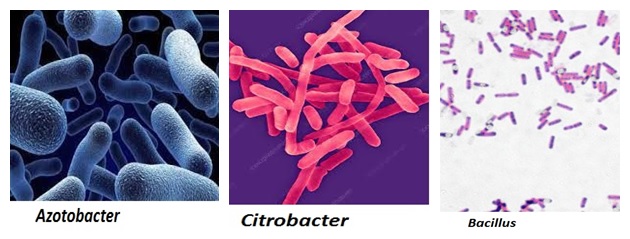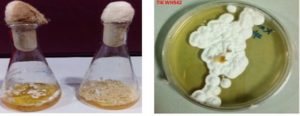Beneficial Soil Micro-organisms, a substitute for chemical fertilizers

Dr. Vaidehi.C.Desai, PhD in Life Sciences, MSc in Bio technology ; November 22 ,2021
The new challenges that this world will face in agriculture in the future will force to implement methods and strategies to increase the food production in whatever land is available. We all know that soil microorganisms form the major component in making the soil fertile naturally. They have the capacity to promote increase in the crop productivity, the healthy growth of the plants, and also help to increase the mineral content and make it available for the crop plants. This article tells us about the potential and existing uses of beneficial soil microbes which are categorized as “Biofertilizers” and also gives an idea of their activities. Plant growth promoting microorganisms (PGPM) influence plant growth and plant nutrition through many methods including nitrogen fixation, breaking down of organic matter, solubilization of soluble minerals, releasing of chelating compounds and also biologically active substances like vitamins , enzymes and also increase in the root system efficiency in absorbing the nutrients and transporting it in the whole plant. Endophytic bacteria or Non symbiotic soil bacteria which belong to the genera Azotobacter , Citrobacter ,Gluconacetobacter Acetobacter, Enterobacter, Azoarcus, Bacillus, Paenibacillus, Burkholderia, Herbaspirillum, Clostridium, Klebsiella, Azospirillum and Pseudomonas are able to fix atmospheric Nitrogen and are found responsible for supplying of biologically fixed nitrogen to many crop plants.
Production of bioactive metabolites and indirect mechanisms may tend to improve the growth of the plant , such as decrease the number of phytopathogens present in the soil or increase the immunity of the plant by increasing the resistance to pathogens. Various species of rhizosphere present in the may solubilize insoluble mineral phosphates, through acidification and also through the production of organic acids, and thus it will mobilize the enormous reserves of phosphorus (P) which are mostly stored in most soils and which are not directly available for the plants to intake them.

It is generally found that fungi exhibit P-solubilizing ability in greater proportion as compared to bacteria. Members of the genera Penicillium, Trichoderma and Aspergillus are particularly found to be efficient P-solubilizers. Among bacteria, Bacillus spp. and Pseudomonas spp. , have shown very good results especially in combination with Arbuscular Mycorrhizal fungi (AMF) and P-solubilizing fungi. Under field conditions, it is observed that combined use of P-solubilizing microorganisms (which are found in the soil) with mineral fertilizers such as rock-phosphate has mostly given progressive results.
It is also observed that in the rhizosphere, the biological activities of microorganisms mediate the solubility, and therefore the availability of micro-nutrients at root surface is possible, but most of the soils are found to be defective due to the depletion which is the result of intensive farming.
The soil pH can be altered by the AMF and PGPM and also the equilibrium of many chemical and biochemical reactions such as precipitation/dissolution, adsorption/desorption, complexation /dissociation, and oxidation/reduction of metal cations can be modified and thus resulting in the regulate through plant uptake.
Not only enhancing plant nutrition under deficient or limited conditions, they may also reduce the detrimental effects of micro-nutrients, which are excessively present in the soil, which may mostly occur in polluted soils or acid soil. So we can conclude that, to reduce the economic and environmental costs of the extensive use of synthetic fertilizers and also to obtain safer food, the use of PGPM as biofertilizers becomes a concrete prospective.
All the evidences summarized in this review, shows that the beneficial micro-organisms which are found in the soil, either alone or in the combination or in the colonies with organic fertilizer may be utilized to increase the crop productivity and also maintain the fertility of the soils without having any bad effect on our environment . These multifunctional agents are found to be a renewable resource with low environmental impact. Therefore, beneficial soil microbes should be further studied and explored for the development of sustainable agriculture.







